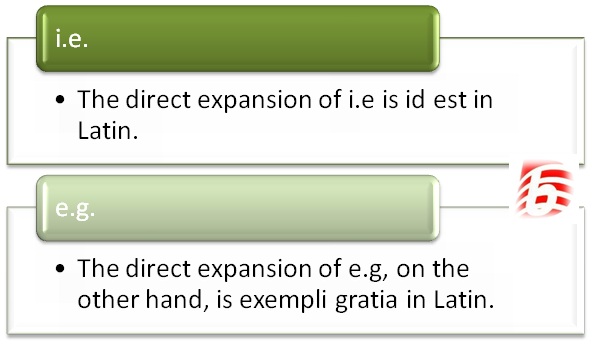i.e vs e.g
The abbreviations i.e and e.g are commonly used in English writing, and it is essential to understand the difference between them. Both have their origins in Latin, and their usage varies.
What does i.e., mean?
The direct expansion of i.e., is id est in Latin, which means “that is.” It is used to add explanatory information or to restate something in different words. For example, “Let’s say we see a white man, i.e., not a man with black skin.”
What does e.g., mean?
The direct expansion of e.g., is exempli gratia in Latin, meaning “for the sake of example.” It is used when listing examples for a term or a supposition stated before. For instance, “Fine arts are of various types (e.g., music and dance).”
What is the difference between i.e. and e.g.?
Both i.e. and e.g. are followed by periods, with the two letters separated by periods and followed by a comma. The primary difference is that i.e. is used to elucidate the statement that precedes it, while e.g. is used when listing out examples for a term or supposition.
Key Takeaways
- i.e. is short for “id est” in Latin, meaning “that is,” and is used to add explanatory information or restate something in different words.
- e.g. is short for “exempli gratia” in Latin, meaning “for the sake of example,” and is used when listing examples for a term or supposition stated before.
- Both i.e. and e.g. are followed by periods and are separated by periods, followed by a comma. Their usage is not interchangeable.
